History of Trinity in Camberwell
The Foundation
On March 2nd 1885 a letter signed by sixty-five junior and senior members of Trinity College was sent to all members of College:
“It is proposed to establish a Mission in some poor part of London, to be maintained and carried on by members of this College … The need to work among the poor is great … it will be of great advantage to the College as a whole that it should be united in a good work peculiarly its own,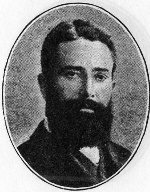 which members of the College may not only support by subscriptions, but visit and take some part in …”
which members of the College may not only support by subscriptions, but visit and take some part in …”
The poor and densely populated parish of St George’s Camberwell was chosen as the location of the Mission, to the delight of the Bishop of Rochester: “The news about Trinity comes like a bottle of port wine to a weak man”.
Early years
By 1886 a Trinity man, the Revd Norman Campbell, was established as Vicar of St George’s and Warden of the Mission. A team of ex-Trinity clergymen took up residence, and premises for the Mission were rented in Albany Road. In 1893 the Master, Montagu Butler, spoke of “bringing the young men of Trinity face to face, heart to heart, with the poorer classes of London.” An appeal raised £13,000 for a new Mission building in New Church Road in 1895. The Mission’s cultural, social and religious work in the parish flourished, including day schools, a hospital for the poor, Bible classes, Sunday schools, women’s guilds, clubs for working men, lads and girls providing for sport, music, art and crafts, a girls’ centre, Church Lads’ Brigade, scout troop, choirs, a temperance society, even soup kitchens for the direct relief of poverty.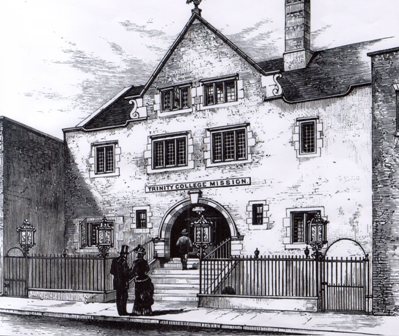
Between the Wars
In 1919 two Trinity undergraduates noted:
“The Trinity Mission is a real part of Trinity College, and shows a finer side of Trinity than can be seen in Cambridge, for all the beauty of the Great Court and for all the ugliness of the Albany Road buildings … once seen, the Mission’s claim for sympathy and help is quite irresistible.”
The Mission faced the two great social problems of housing and unemployment in Camberwell in the 1920s and 1930s, and its vital work continued despite occasional financial problems. There were two large boys’ clubs, a young men’s club, an institute for girls and women, Scouts, Cubs, Guides, Brownies, an athletics club, and regular dances, camps and trips.
In 1935 the Mission celebrated its golden jubilee. The Bishop of Blackburn observed: “Cambridge has never done a greater thing, either for itself or others, than when it launched out fifty years ago on its South London adventure.”
The Post-War Years
The Second World War devastated Camberwell, bombing reducing much of the area to rubble, and destroying the patterns of social life built up over decades. The Mission was the heart of the community during those tragic years, organising, helping and doing what it could to alleviate hardship. Only 400 of Camberwell’s 40,000 houses survived the war undamaged.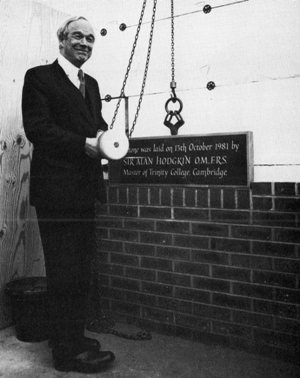 The 1950s, 1960s and 1970s saw clearing, demolition, and rebuilding, the old generation being displaced and the old terraces replaced by new estates and blocks of flats. As the Mission gave assistance to those moving away, it also had to help the newcomers settle in. Five vast new and impersonal Council estates replaced the Victorian terraced housing, leading to further social problems for the Mission to tackle. Remarkably, twenty-five years later these were to be demolished in their turn and replaced with social housing on a more human scale.
The 1950s, 1960s and 1970s saw clearing, demolition, and rebuilding, the old generation being displaced and the old terraces replaced by new estates and blocks of flats. As the Mission gave assistance to those moving away, it also had to help the newcomers settle in. Five vast new and impersonal Council estates replaced the Victorian terraced housing, leading to further social problems for the Mission to tackle. Remarkably, twenty-five years later these were to be demolished in their turn and replaced with social housing on a more human scale.
It was in 1966 that a new project began: the Trinity College Centre Holiday Scheme, providing activities for Camberwell children, still going strong more than forty years later (and still evoking fond memories for many past Trinity volunteers). In 1967 The Mission building in New Church Road was refurbished and renamed the Trinity College Centre. In 1970 the huge and cold Georgian church was declared structurally unsound and the congregation migrated for the next few years to the school.
The Trinity College Centre 1981
As part of their plan in the 1970’s to create a major new park in South London, the Greater London Council compulsorily purchased and demolished the Mission buildings. A decision was made to continue the work of the Mission by building a new Centre next to St George’s School. Using the compensation money, funds raised by the College and its members, and contributions from parish and diocese, the current buildings were erected, containing two halls, ancillary rooms and a dedicated church space.
The work at the heart of the community goes on, some of which you will read about elsewhere on this website. However, this building is nearly thirty years old, and is beginning to show its age. We have recently replaced the kitchen and are about to renew
the play area. Our future projects include the redecoration of the Hall and the replacement of the minibus.
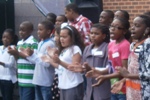 |
 |
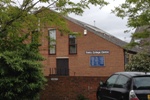 |
| News from Camberwell | Donate now | The Trinity College Centre |
 |
 |
 |
| The Friends of Trinity in Camberwell |
Fundraising projects |
Camberwell home page |
We thank Dr Lawrence Goldman of St Peter’s College Oxford (Trinity Research Fellow in History, 1985) for permission to base this article on his book Trinity in Camberwell: A History of Trinity College Mission in Camberwell 1885-1985.
Trinity in Camberwell, Registered Charity Number 279447
